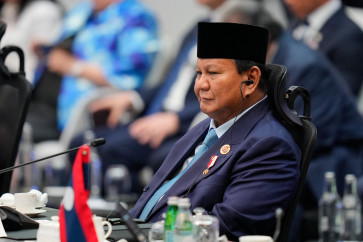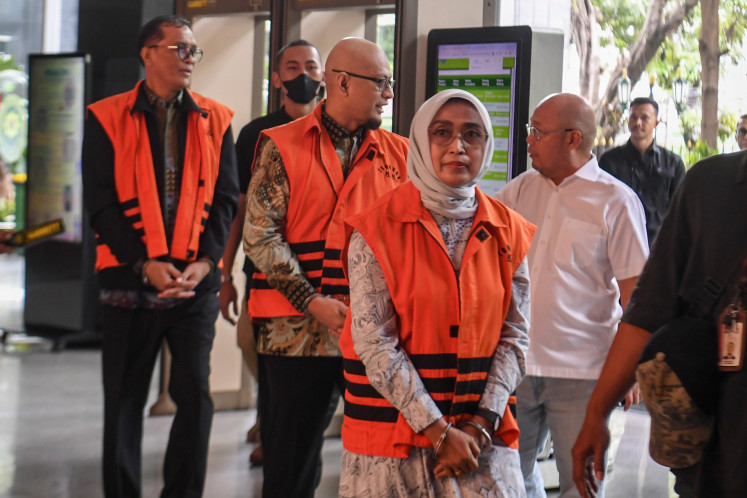Popular Reads
Top Results
Can't find what you're looking for?
View all search resultsPopular Reads
Top Results
Can't find what you're looking for?
View all search resultsToday is Batik Day
If 60 million people - a quarter of the Indonesian population - will wear batik today that will be a special day indeed
Change text size
Gift Premium Articles
to Anyone
I
f 60 million people - a quarter of the Indonesian population - will wear batik today that will be a special day indeed. Never was our traditional fabric put on the national pedestal in such a way in recent memory.
Being recognized by UNESCO as an Indonesian cultural contribution to the world is a valid reason to celebrate this beautiful traditional fabric and the garments made from it.
Although batik is found in other countries like China, Africa and Egypt, still the United Nations Educational, Scientific and Cultural Organization has now acknowledged that the dyeing technique is uniquely Indonesian. This will give this technology some degree of protection under the UNESCO charter.
This is not the first time UNESCO has recognized the nation's contribution to the world heritage. It singled out the wayang (puppets) and keris (daggers) for similar treatment in 2003.
Many Indonesians think that batik is a typical Javanese product. This is not true although it is understandable because stories about batik in the regions are quite rare. However batik is to be found throughout the thousands of islands of the archipelago from Sumatra in the west to Papua in the east.
This recognition from the world body should spur the government to support batik producers, particularly, the smaller traders.
Batik promotional visits overseas to help make Indonesian batik an international icon in the world of global fashion, is something to be applauded. There should be more of such efforts.
A well-founded concern in the country is that foreigners often appear to appreciate our cultural heritage more than we do ourselves. The younger generation, for example, tends to ignore the age-old traditions of batik dyeing techniques, although they are more interested to wear batik garments in recent years.
Young Indonesians also tend to shun other traditional icons like the wayang, angklung (the light bamboo instruments), the gamelan (the Javanese orchestra), traditional dances or even local dialects.
On the other hand, many universities abroad have gamelan classes. A steady stream of foreign students comes to places like Yogyakarta and Bali to learn about our traditional dances. Maritime students come to Sulawesi to learn about traditional boat making.
And several international organizations are racing with time to record some of our almost extinct local languages, before they are gone forever.
Excesses do occasionally occur, like the case of the Balinese silver crafters who are no longer able to produce some of their own creations that have been patented by unscrupulous foreigners abroad, without their knowledge.
As we celebrate the UNESCO charter in Abu Dhabi today, by wearing batik here in Indonesia and abroad, we should become more aware that we still have a lot of homework to do to safeguard our cultural heritage.










